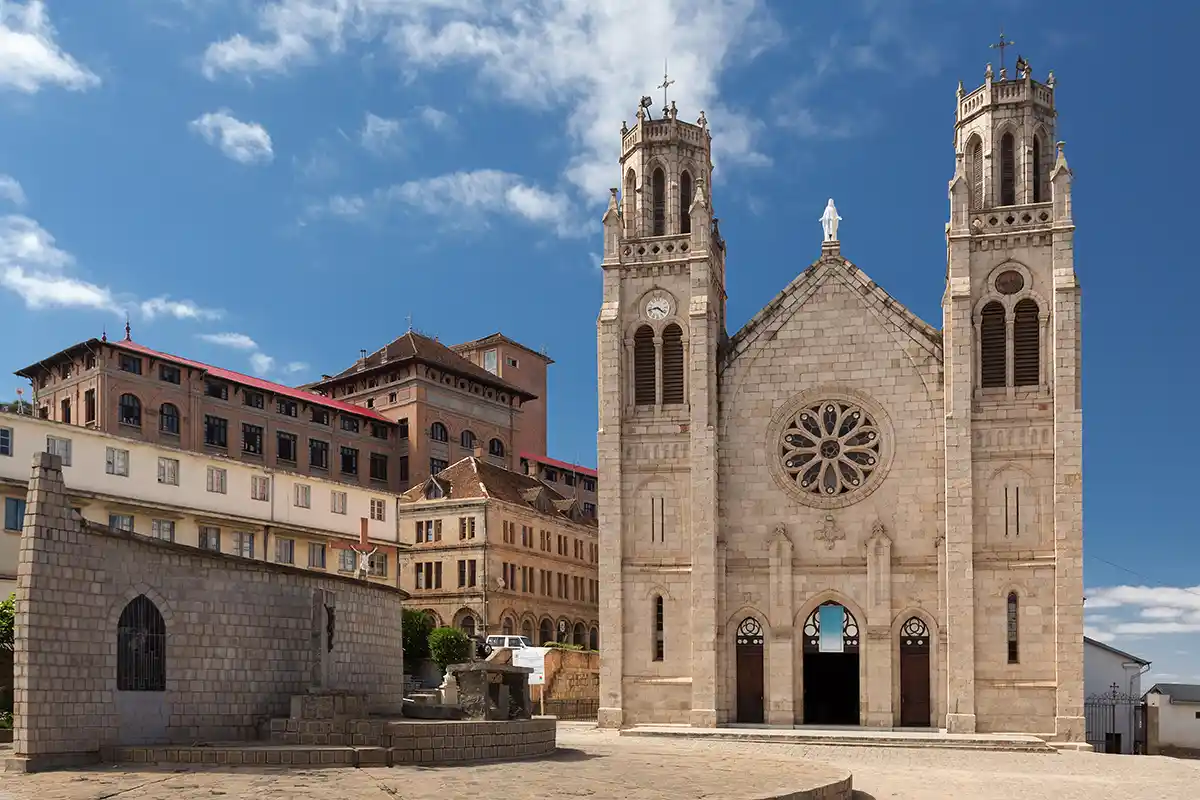Sacred Sites of Madagascar
Madagascar: Crossroads of Spirituality and Natural Wonders
Madagascar, an island nation steeped in rich cultural traditions, offers a unique exploration of sacred sites. These places reflect both the influence of introduced religions like Christianity and deeply rooted ancestral beliefs, often interconnected with the island's extraordinary natural landscapes.
Royal Hill of Ambohimanga
A UNESCO World Heritage Site and former royal capital, the Royal Hill of Ambohimanga holds tremendous cultural and spiritual significance. Revered as the abode of ancestral spirits, this fortified complex includes palaces, tombs, and sacred bathing pools. It provides a fascinating glimpse into the traditional belief systems and rituals linked to royalty and honoring ancestors.
Avenue of the Baobabs
These towering, almost alien-looking trees lining a dirt road possess an otherworldly beauty. While not a designated pilgrimage site, their unique form evokes awe and a sense of the sacred. Local tradition maintains these giant trees were once deities punished for their pride, creating a fascinating overlap between spiritual belief and the natural landscape.
Mt. Ambondrombe, Madagascar
In northern Madagascar, Mt. Ambondrombe commands spiritual importance for the Antakarana people. They revere this mountain as a dwelling place of ancestral spirits and undertake regular pilgrimages to its summit. Participation in sacred rituals on Mt. Ambondrombe serves to strengthen communities and their connection to both ancestors and the land.
Christian Churches and Cathedrals
Christianity, introduced by missionaries in the 19th century, plays a significant role in Madagascar's religious landscape. Sites like the Andohalo Cathedral in Antananarivo (pictured above) and the imposing Immaculate Conception Cathedral in Antsiranana stand as testaments to the country's Christian traditions. Smaller churches across the country dotting towns and villages further speak to the widespread adherence to this faith.
Zafimaniry Woodcarving Villages
The renowned woodcarving skills of the Zafimaniry people reflect more than just artistry. Geometric patterns adorning houses and objects hold symbolic meanings and spiritual significance. While not pilgrimage destinations in the strictest sense, Zafimaniry villages demonstrate the inseparable link between artistic creation and spirituality for this Malagasy community.
Traditional Sacred Sites
Across Madagascar, numerous locations bear spiritual importance for traditional beliefs. These range from forests deemed sacred dwellings of spirits to lakes or rock formations associated with legends and myths. While many locations hold significance for specific communities and access might be restricted for outsiders, they represent a vibrant and ongoing practice of indigenous spirituality.
Madagascar's tapestry of sacred places demonstrates the complex interplay between faith, culture, and the natural environment. From designated pilgrimage sites to locations imbued with spiritual meaning, these sites provide a captivating lens through which to understand this unique island nation.
Important Note:
Respect for local customs and traditions is paramount when visiting Madagascar's sacred sites. It's important to gain permission before entering and to familiarize yourself with any particular rules or practices at each location.

Martin Gray is a cultural anthropologist, writer and photographer specializing in the study of pilgrimage traditions and sacred sites around the world. During a 40 year period he has visited more than 2000 pilgrimage places in 160 countries. The World Pilgrimage Guide at sacredsites.com is the most comprehensive source of information on this subject.

